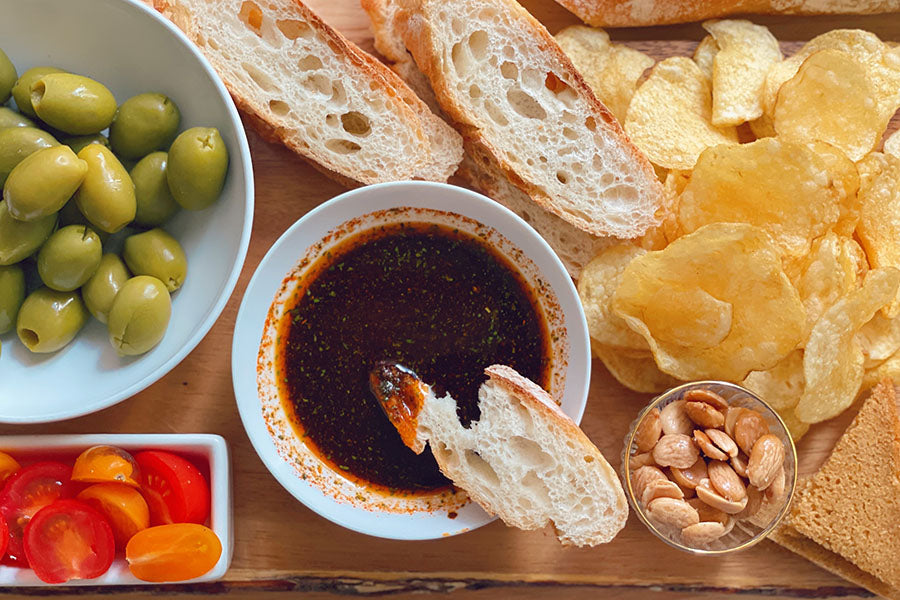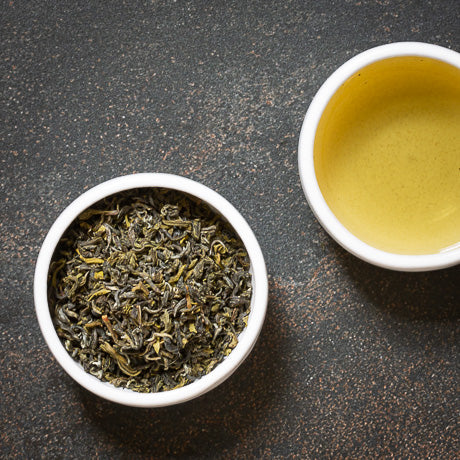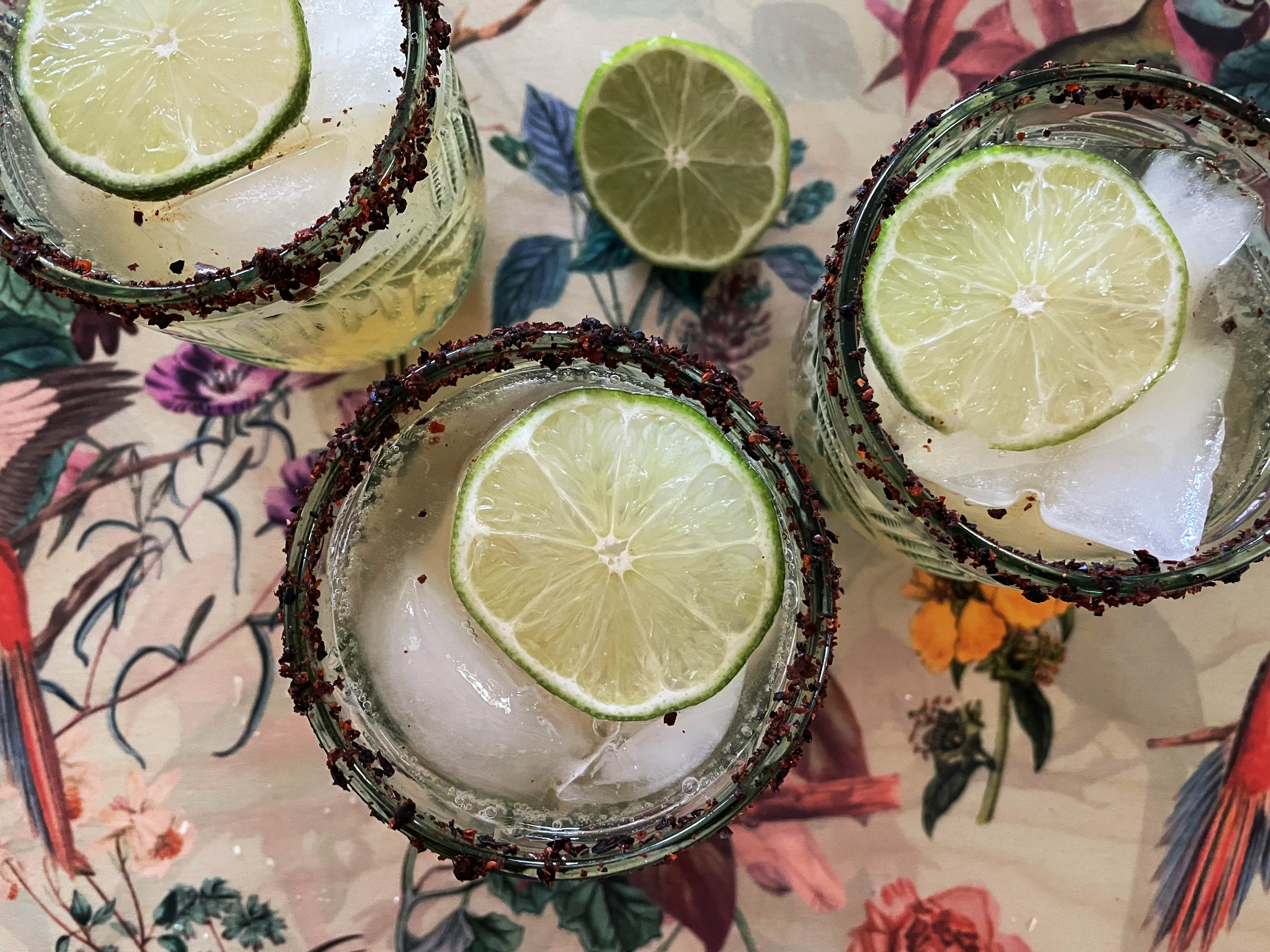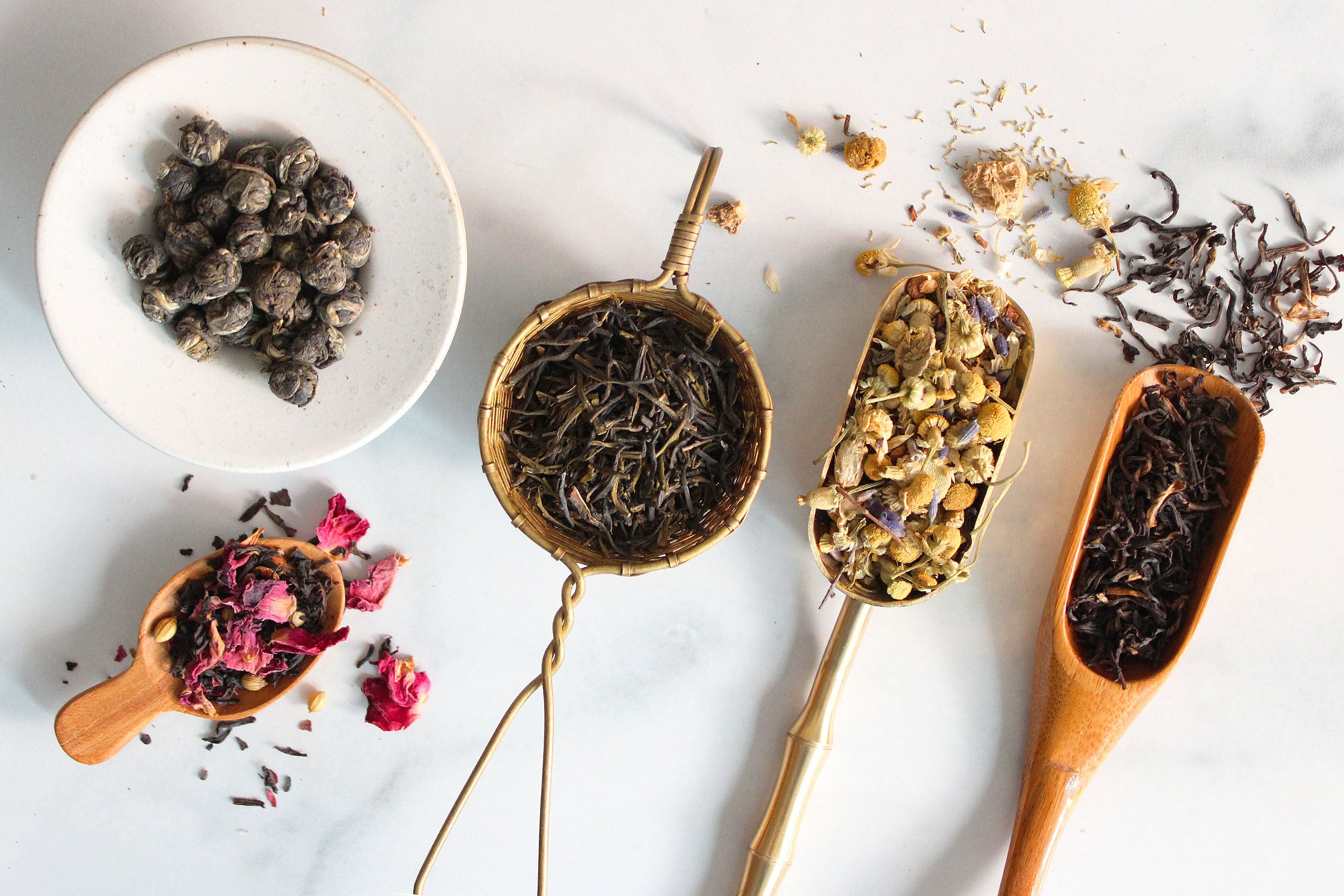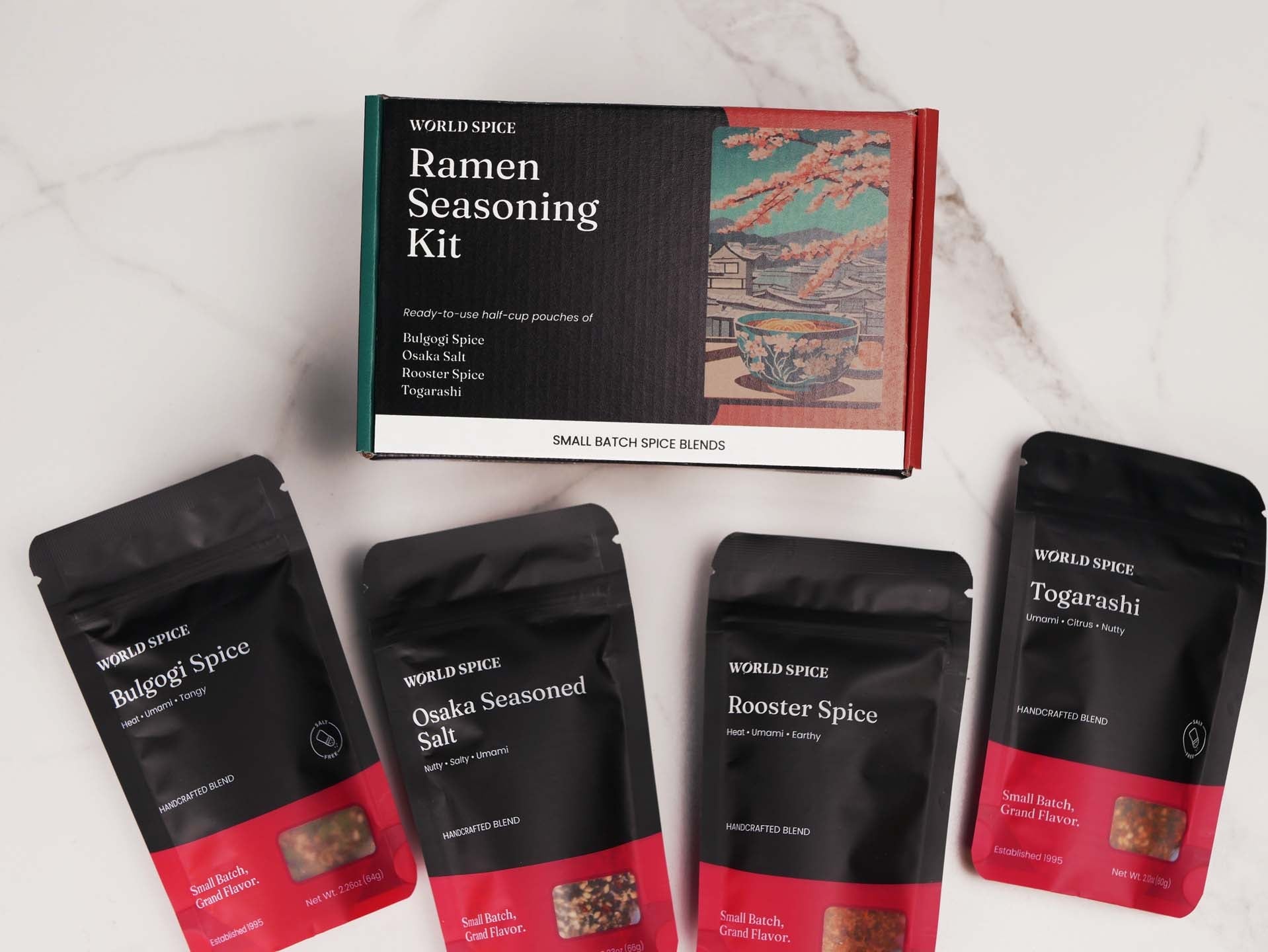Recipes
Eggnog Chiffon Pie
One sure sign that winter has arrived is the appearance of eggnog in the grocery stores. We're going to use that distinctive flavor here in this light and airy Eggnog Chiffon Pie, but we'll also be giving it a subtle new make-over by substituting Mace for the traditional Nutmeg. This allows the mellow, earthier tones of the Mace to shine through, tempered by a judicious touch of spirits. Typically, a chiffon pie gets it's soft, pillowy texture from a combination of whipped cream, whipped raw egg whites and a cooked creme anglaise, or custard sauce, stabilized with a little gelatin. In the interest of food safety we opted to make a Swiss Meringue with the whites, which quickly cooks the eggs to a safe temperature before whipping them up. The crust includes more spices and ground pecans, providing a satisfying crumbly contrast to the smooth, creamy filling.
Learn moreLitibu Collective Chicken Pho
This recipe is from Diem Nguyen the the owner of Litibu Collective. Diem is a friend of World Spice and we're thankful she shared her Mom's recipe for one of our favorite chicken soups. "You may have had phở bò (beef pho), but have you tried phở gà? Phở bò is a long process requiring simmering for hours, ideally overnight..Here we share how to make a less time-intensive version of phở gà (Chicken) and the techniques required for any phở. "-Diem Nguyen
Learn moreCafé De Olla
One of my favorite breakfast drinks is Mexican spiced coffee. This drink is traditionally made in a large clay pot where you simmer warm spices like true cinnamon, cloves, and star anise with coffee. It's name translates to ''pot coffee'' because the clay pot adds an earthy flavor to the drink and only gets better with each batch made. Traditionally, a raw cane sugar cone, piloncillo, is melted down, adding sweetness and caramel notes, similar to brown sugar. Once the water is sweetened and aromatic, my grandma would add a sinful amount of instant coffee and pour us a mug along with pan dulce (Sweet Mexican Bread). I grew up drinking the instant stuff for convenience but you can try both options in the recipe below. This beverage is also known as Café Mexicano and every family has their own version. I'm pretty loyal to the combination of true cinnamon, cloves and star anise. The trio makes the coffee floral, warm and sweet, after every sip you'll taste the best out of the malty coffee.
Learn moreAbsinthe Long Pepper Angel Food Cake
It's time to celebrate Absinthe Day! The illustrious Parisian liqueur is noted for its exotic spicing and hallucinogenic effect, but instead of concocting a deadly drink we've decided to make a cake! More user friendly, an Angel food cake makes an ideal sponge for the warm herbal-anise flavor of absinthe. To take it over the top, we added long pepper to elevate the mind-bending flavor. This exotic Balinese pepper tastes a little bit like cardamom and ginger, with a floral top note. This rustic cake is full of flavor and has a heavenly texture. For toppings, we chose a citrus salad with clove simple syrup, along with a dollop of whipped cream for an enchanting bite. So enjoy this magical cake to celebrate Absinthe Day and if you have a nip on the side, we won't tell....
Learn moreAchiote Paste
Fun alert! Spices offer so many ways to play with flavor and texture, and making achiote paste is a great one. Made with a combination of annatto seeds, spices and a little bit of liquid to bind it together, the paste can be used in a variety of rubs, marinades and sauces. Annatto seeds are the star and they provide an earthy flavor and deep red color to your food. The seeds are very hard and most easily ground in a high speed blender or electric spice grinder. Alternatively, you can put some elbow grease behind your mortar & pestle or molcajete to get the job done. Use the paste made fresh, keep it in the fridge or freeze in ice cube shapes so you'll always have some of this fantastic flavor on hand. The paste is traditionally formed into a brick for easy use.
Learn morePortuguese Ginjinha
Ginjinha, or Ginja for short, is a liqueur made from an infusion of sour cherries, also called ginja berries. After a friend from Lisbon introduced us to this delicious concoction, we waited almost a year Pacific Northwest cherries to be in season so we could try to make our own. Our recipe for this liqueur is spiced with Cassia Stick Cinnamon and Cloves to add a spicy, aromatic bite.Traditionally served in shot glasses for a slow sip with a tart cherry garnish, Ginjinha is also a great ingredient in other cocktails. Try using some in a batch of sangria, or add a bit to your Manhattan for a sweet and spicy twist. As soon as we tried it, Ginjinha quickly became a bar cart staple for its versatility and unique flavor.
Learn moreGingerbread Caramels
Some spices are just born leaders, with big loud voices and an overwhelming presence. Mace can be one of those show-offs, unless properly tamed. Mace is actually the lacy outer covering of the nutmeg, but its flavor is a bit earthier than nutmeg - think bass vs. soprano. Here we're getting the most out of it's character by combining it with other spices to recreate the scintillating flavor of freshly baked gingerbread, but in a soft, chewy caramel candy, perfect for gift-giving this holiday season.Now there's nothing to fear in caramel making, as long as you follow a few simple rules. Rule #1 is know your altitude. Sugar cooks quicker (which means that water evaporates faster, and that's what control's your ultimate texture) at higher altitudes, so the general rule is to subtract 2 degrees for every 1000 feet above sea level from your final temperature. For example, our basic, sea level recipe calls for a final cooking temperature of 240 F. for a soft caramel. My kitchen is around 3000 ft., so, after a bit of experimenting, I finally altered the target temperature to 238 F. It may take a few tries to find the softness that you prefer - I like my caramels a bit on the softer side. The second rule to follow is to STIR CONTINUOUSLY while cooking the caramel. Dairy products burn really easily at high temperatures, and you don't want that. Thirdly, know your thermometer. Test it by filling a large glass with ice and enough water to separate the cubes. Let it sit for a minute, then insert your thermometer - it should read 32 degrees. If not, make a note of how far off it is, and adjust your cooking accordingly. And remember, the caramel mixture will be extremely hot, so resist the temptation to taste it until it's cooled off. I like to keep a dab on my spatula for tasting purposes, since it will cool off quickly. Follow these few rules, and you'll find yourself on the road to candy making success.Note: To make clean up a breeze, after you pour out the caramel refill the pot with water. Cover and bring to a boil, then set aside for a few minutes. The hot water and steam will help dissolve the cooked sugars.
Learn moreQuatre Epices
Despite its name, which means "four spices" in French, this blend never seems to keep strict count on the number of its ingredients. Quatre Epices can be used in both savory and sweet dishes. Often included in paté, forcemeat and sausage making, it is equally at home in gingerbread or cake, such as in this delicious French Quatre Epices Cake, as seen in Sunset Magazine.
Learn moreMelange Classique
This fanciful French blend combines nutmeg and pepper with a healthy harvest from the herb garden, to satisfy all your taste buds. Melange Classique is an all purpose seasoning for stews and roasts, pate, stuffing and bean dishes. Melange Classique will work well as a rub on any meat, particularly lamb, duck and pork.
Learn more










